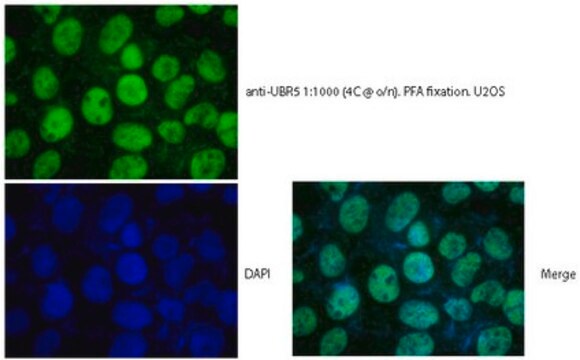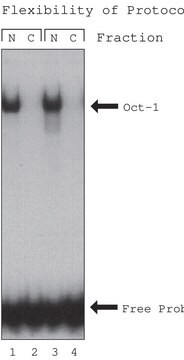OGS3162
PSF-OXB20-NH2-PHOA - PHOA SECRETION PLASMID
plasmid vector for molecular cloning
Sinonimo/i:
cloning vector, expression vector, molecular cloning vector, plasmid, plasmid vector, snapfast vector, vector
About This Item
Prodotti consigliati
Ricombinante
expressed in E. coli
Stato
buffered aqueous solution
PM
size 3911 bp
Selezione batterica
kanamycin
Origine di replicazione
pUC (500 copies)
Clivaggio proteico
no cleavage
Posizione del tag peptidico
N-terminal
Promotore
Promoter name: OXB20
Promoter activity: constitutive
Promoter type: bacterial
Gene reporter
none
Segnale di secrezione
PhoA
Condizioni di spedizione
ambient
Temperatura di conservazione
−20°C
Descrizione generale
About the Peptide Tag:This plasmid contains an PhoA secretory signal peptide (SP) to allow proteins to be exported from the cytosol. During translocation from the cytosol the signal peptide is removed from the protein by endogenous proteases. .
Promoter Expression Level: This plasmid contains a constitutive bacterial promoter that does not require induction. It is the strongest bacterial promoter we sell and this can cause solubility and expression problems with some proteins. We also offer a range of other bacterial promoters that are compatible with this plasmid and are available on request.
Sequenza
Risultati analitici
Prodotti correlati
Codice della classe di stoccaggio
12 - Non Combustible Liquids
Punto d’infiammabilità (°F)
Not applicable
Punto d’infiammabilità (°C)
Not applicable
Scegli una delle versioni più recenti:
Certificati d'analisi (COA)
Ci dispiace, ma al momento non ci sono COA disponibili online per questo prodotto.
Se ti serve aiuto, non esitare a contattarci Servizio Clienti
Possiedi già questo prodotto?
I documenti relativi ai prodotti acquistati recentemente sono disponibili nell’Archivio dei documenti.
Il team dei nostri ricercatori vanta grande esperienza in tutte le aree della ricerca quali Life Science, scienza dei materiali, sintesi chimica, cromatografia, discipline analitiche, ecc..
Contatta l'Assistenza Tecnica.







